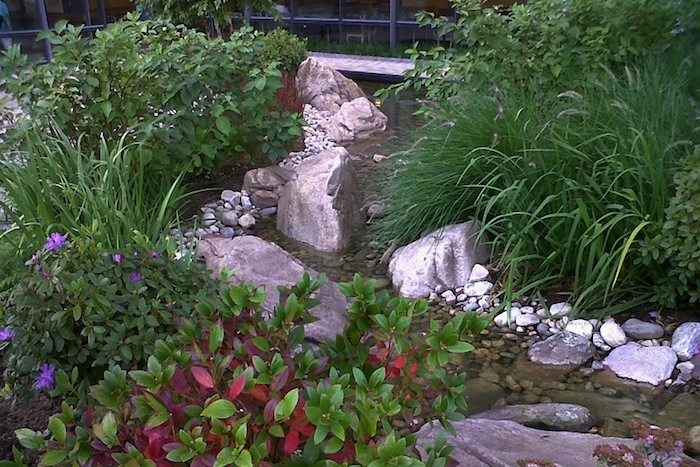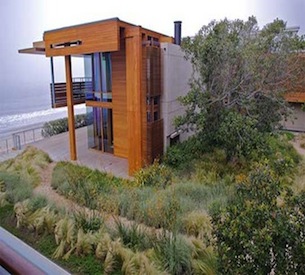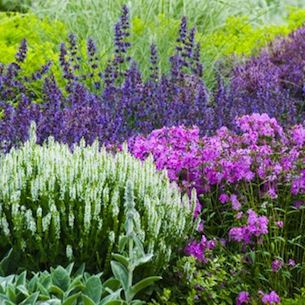Landscape Design

The benefits of beautifully-landscaped outdoor areas are obvious: they create a peaceful, natural setting in which to relax, unwind, entertain, and connect with the natural world around us. However, oftentimes these landscaped areas are designed in such a way that they require a great deal of work and energy to maintain, as well as large amounts of water.
For green homeowners, the planning and design of outdoor landscaping should always be done to minimize their environmental impacts. Outdoor areas that are beautiful and benefit the environment are a win-win for everybody.
Design with the Health of the Planet in Mind
There are several areas to pay attention to when creating a backyard oasis that is 'green' in more ways than one. A well-designed landscape should first of all result in areas that you will want to spend time in; beautiful, relaxing spaces perfect for spending time with family and friends.The outdoor spaces should be filled with colorful, drought-resistant plants and trees that require minimal maintenance to stay healthy, as well as attract beneficial wildlife such as birds and butterflies. Landscaped areas should be designed to minimize outdoor water usage, which is often the largest source of water use in the home. The right plant selection will also reduce or eliminate the need for herbicides and pesticides.

Sustainable Landscape Design
Use Plants to Reduce Your Carbon Footprint
Even the most efficient green homes require some energy, which usually means the burning of fossil fuels. Planting abundant plants and trees in your landscaping will help offset your homes' carbon emissions by absorbing carbon dioxide and releasing oxygen into the air.Location, Location, Location
Proper planning helps to reduce maintenance and energy usage over time. Small plants can triple in size very quickly, crowding out other plants and upsetting the look and flow of a landscaped area. Shade-loving plants placed in sunny locations will wither and die.It's important to take into account such things as a plants' mature size, water requirements, soil conditions, amount of sunlight, as well as a plants' color, shape, even fragrance. Doing so beforehand reduces the need to replace or relocate plants later. Long-term maintenance (and all the energy it requires) is also reduced. Gas-powered blowers and trimmers are very polluting, not to mention very noisy.
One good way to choose the right plants for your landscaping is to find out what plants are local to your area. Native plant species will generally require less water and be more resistant to insects and drought than non-native varieties.
Use Landscaping for Cooling
Locating shade-producing plants on the south and west sides of a home can block out some or all of the suns' heat. This beneficial shade helps to reduce the buildup of heat in the home, which in turn reduces the need for energy-hogging air conditioning.Choose Permeable Surfaces
Most landscaped areas include patios and paths or walkways. These are typically made of concrete or other non-permeable materials. Choosing permeable materials for these hard surfaces allows rainwater to flow through them into the soil to nurture the plants and replenish underground aquifers rather than simply runoff into sewer systems and waterways.
Add Mulch to the Equation
Any landscaped area will benefit from mulch. Mulched material absorbs much more water than the soil itself; by adding it around plants in landscaping, water is retained much longer without running off or evaporating. Two to three inches of mulch also discourages weed growth, since most weed seedlings cannot penetrate the mulch to get to sunlight. Natural mulch (such as organic wood chip mulch) will break down over time to add nutrients to, and eventually become part of, the soil.Irrigate the Smart Way
Conventional sprinklers waste a great deal of water to evaporation and runoff. Good landscape design will incorporate drip irrigation systems to apply water directly to the soil. Drip irrigation allows homeowners to provide beneficial moisture much more efficiently to the plants in a landscaped area. 'Smart' irrigation controllers also reduce water usage by adjusting watering schedules based on local conditions and shutting down irrigation altogether during rainy periods. Read more about drip irrigation here.Landscape Design and the Green Home
By combining the homeowners' landscaping wants and needs with a design that is mindful of the environment, a homes' landscaped areas can be a beautiful, healthy, beneficial addition to any green home.
comments powered by Disqus



































































